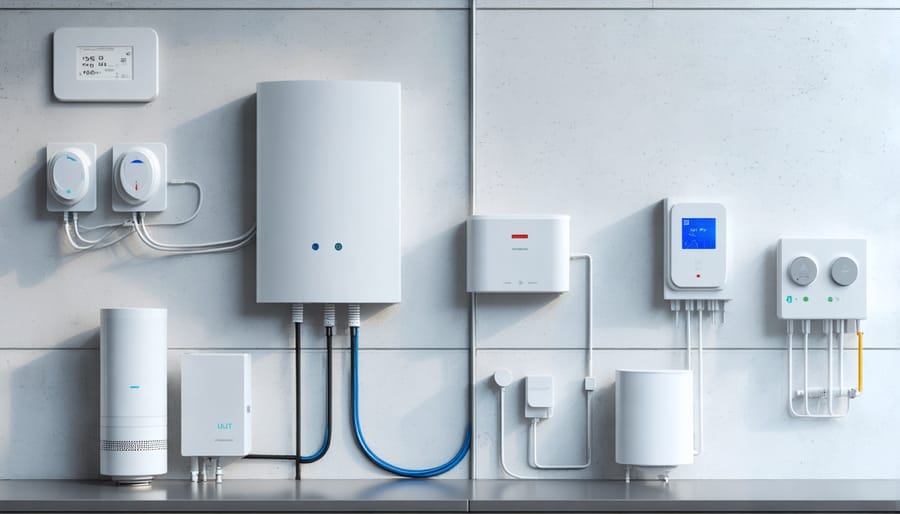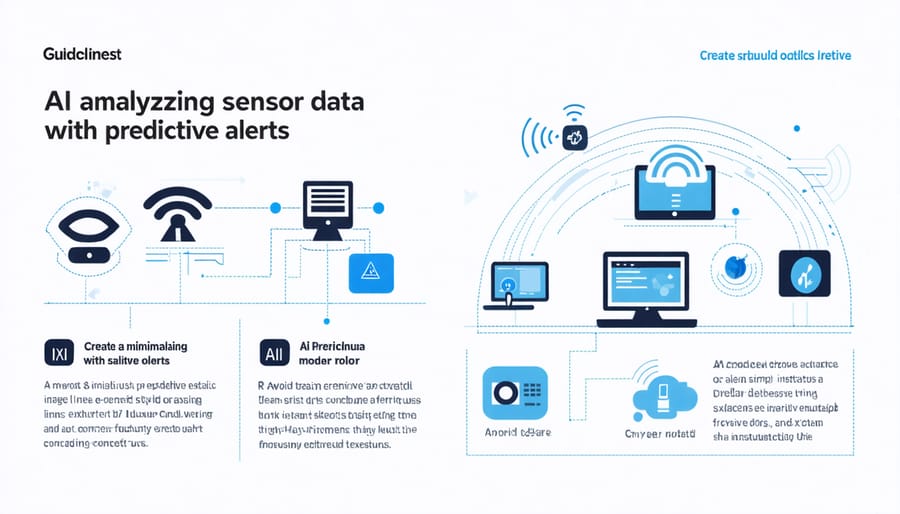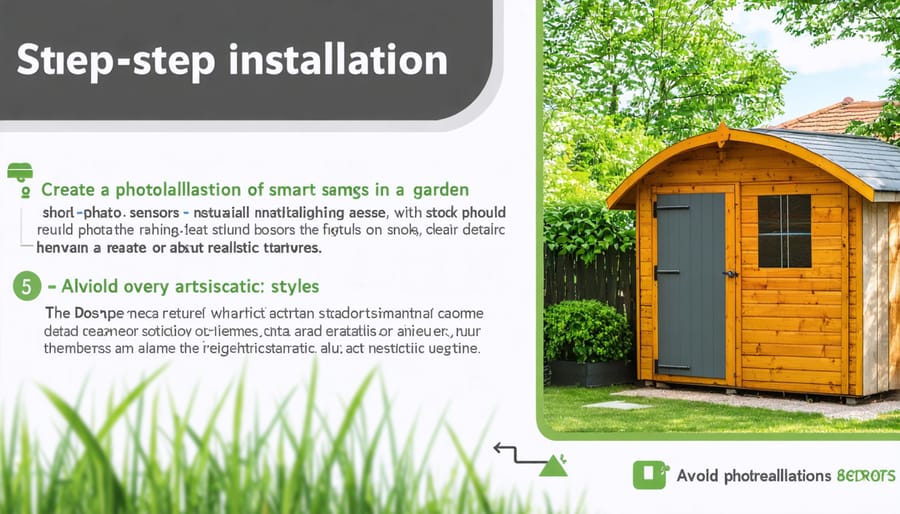Smart Tech Keeps Your Shed Perfect: How AI Predicts Maintenance Needs

Transform your maintenance strategy from reactive to predictive with machine learning algorithms that detect equipment failures before they occur. By analyzing real-time sensor data from your machinery, predictive maintenance systems can identify subtle patterns and anomalies that signal potential breakdowns – saving up to 40% in maintenance costs and reducing unexpected downtime by 50%.
Modern manufacturing facilities face a critical challenge: balancing equipment reliability with maintenance costs. Machine learning offers a powerful solution by continuously monitoring equipment health through sensors, analyzing performance patterns, and alerting maintenance teams to developing issues. This proactive approach not only extends equipment life but also optimizes maintenance schedules, reduces spare parts inventory, and prevents costly emergency repairs.
Whether you manage a small workshop or a large industrial facility, implementing machine learning-driven predictive maintenance can dramatically improve your operational efficiency. The technology has evolved to become more accessible, affordable, and user-friendly, making it a practical investment for businesses of all sizes seeking to modernize their maintenance operations.
How Machine Learning Watches Over Your Shed
The Smart Sensors That Never Sleep
Modern storage structures now come equipped with an array of intelligent sensors that work around the clock to protect your investment. These vigilant guardians include moisture sensors that detect water infiltration before it causes damage, temperature monitors that track environmental conditions, and structural sensors that measure the building’s stability and integrity.
Moisture sensors are particularly crucial, as they can spot leaks or dampness in walls and flooring before visible signs appear. They’re typically placed in vulnerable areas like corners, near doors, and around windows. Temperature sensors help maintain optimal conditions for stored items while preventing condensation that could lead to mold growth.
The real game-changer is the structural monitoring system. These sensors detect subtle shifts in the building’s foundation, changes in load distribution, and even minor cracks before they become serious problems. They measure factors like vibration, tilt, and pressure, providing early warnings when something isn’t quite right.
All these sensors work together, feeding data to a central system that uses machine learning to identify patterns and predict potential issues before they become costly repairs.

Your Shed’s Digital Guardian
Think of your shed’s monitoring system as a vigilant guardian, constantly watching over your valuable storage space. Modern sensor technology, coupled with an automated alert system, works tirelessly to protect your investment. These smart sensors collect data about temperature, humidity, structural movement, and even air quality, feeding this information into sophisticated machine learning algorithms.
Just like a doctor monitoring vital signs, these algorithms learn what’s “normal” for your shed. They detect subtle patterns and changes that might escape human notice. When something unusual occurs – like increasing moisture levels that could lead to mold, or slight structural shifts that might indicate foundation issues – the system alerts you before minor problems become major headaches.
The beauty of this technology lies in its ability to learn and adapt. Over time, it becomes more accurate at predicting when maintenance will be needed, helping you schedule repairs at convenient times rather than dealing with emergency situations.
Real Problems These Systems Catch Early

Moisture and Rot Prevention
Modern machine learning algorithms are revolutionizing how we protect storage spaces from moisture-related damage. By connecting moisture sensors with smart climate control systems, these intelligent systems can detect early warning signs of potential water damage before it becomes visible to the naked eye.
The technology works by continuously monitoring humidity levels, temperature fluctuations, and condensation patterns. When unusual moisture patterns are detected, the system alerts homeowners immediately through their smartphones, allowing for quick intervention before mold or rot can take hold.
What makes these systems particularly effective is their ability to learn from historical data. For example, if condensation typically forms in certain areas during specific weather conditions, the system will anticipate these issues and adjust ventilation automatically. This proactive approach helps maintain optimal humidity levels year-round.
The system can also identify subtle changes in material density through specialized sensors, catching early signs of wood rot or structural weakening. This capability is especially valuable for protecting valuable items stored in sheds and ensuring the longevity of the structure itself.
For homeowners, this means peace of mind knowing their storage space is constantly monitored and protected, potentially saving thousands in repair costs and preserved belongings.
Structural Stress Alerts
Modern machine learning systems can detect early warning signs of structural stress in your storage building, helping you address potential issues before they become major problems. These smart systems use sensors to monitor various aspects of your shed’s structural integrity, including roof load, wall pressure, and foundation stability.
Think of it as having a watchful guardian that constantly checks your shed’s health. The system learns what’s normal for your specific structure and alerts you when something unusual occurs. For example, if snow accumulation on your roof reaches concerning levels, or if ground settling is causing uneven pressure on the foundation, you’ll receive a notification before any visible damage appears.
These monitoring systems are particularly valuable during extreme weather conditions. They can detect subtle changes in structural components that might indicate developing problems, such as slight shifts in support beams or unusual stress patterns in wall joints. This early detection capability allows you to take preventive action, potentially saving thousands in repair costs.
For most homeowners, the system can be set up to send alerts through a smartphone app, making it easy to stay informed about your shed’s condition. Many systems also provide recommendations for addressing detected issues, helping you maintain your storage building’s structural integrity with confidence.
Setting Up Your Smart Shed System
Choose Your Tech Wisely
When it comes to protecting your storage investment, selecting the right monitoring equipment is crucial. Start with basic temperature and humidity sensors, which are affordable and easy to install. These simple devices can alert you to conditions that might lead to mold growth or wood warping. For more comprehensive protection, consider advanced weather monitoring solutions that track multiple environmental factors.
Motion sensors and door contacts are essential for security monitoring, while vibration sensors can detect structural issues early on. For moisture detection, place water sensors near potential leak points and in areas where condensation might occur. Consider installing smart cameras with night vision capabilities for visual monitoring of both the interior and exterior of your storage space.
The key is to choose sensors that match your specific needs and climate conditions. If you live in an area with extreme weather, prioritize robust outdoor sensors that can withstand harsh conditions. For valuable equipment storage, invest in more sophisticated systems that monitor power usage and equipment performance.
Remember to select sensors that can integrate with your existing smart home system or choose a standalone system that’s user-friendly. Look for devices with reliable wireless connectivity and battery life, as frequent maintenance defeats the purpose of automated monitoring. Many modern systems offer smartphone apps for easy monitoring and instant notifications, making it simple to keep tabs on your storage space from anywhere.
Installation Made Simple
Getting started with predictive maintenance technology in your home is easier than you might think. The process begins with selecting and installing smart sensors in key areas of your storage structure. These small devices, about the size of a quarter, can be easily attached to walls, support beams, or near potential problem areas.
First, identify the critical points in your shed or garage where you want to monitor conditions. Common locations include areas near the roof to detect leaks, around door hinges for movement tracking, and near the foundation to monitor stability. Most sensor kits come with adhesive backs or simple mounting brackets, making installation a DIY-friendly task.
Next, set up the central hub that will collect data from your sensors. This typically plugs into a standard power outlet and connects to your home’s WiFi network. Most systems guide you through this process with a smartphone app, similar to setting up a smart thermostat.
Once your hardware is in place, download the recommended monitoring app to your phone. The initial setup usually takes about 15-20 minutes, during which you’ll name your sensors and establish baseline readings for your structure. Many apps offer guided tutorials to help you understand what the different measurements mean.
The final step is customizing your alert preferences. You can choose to receive notifications when certain conditions change, like unusual moisture levels or temperature fluctuations. Most systems allow you to adjust these settings over time as you learn what works best for your specific situation.
Remember, you don’t need to be tech-savvy to benefit from this technology. Modern systems are designed with user-friendly interfaces, and many manufacturers offer helpful customer support if you need assistance during setup.

Machine learning for predictive maintenance represents a game-changing approach to keeping your storage structures in top condition while saving time and money. By implementing these smart monitoring systems, you can catch potential issues before they become major problems, extending the life of your shed or storage building significantly. The technology’s ability to analyze patterns and predict maintenance needs means you’ll spend less time worrying about unexpected repairs and more time enjoying your well-maintained space.
The benefits are clear: reduced maintenance costs, fewer emergency repairs, and increased peace of mind. Many homeowners who have adopted these systems report significant savings on their maintenance budgets and appreciate the proactive notifications that help them stay ahead of potential problems. Whether you’re protecting valuable equipment or preserving family treasures, predictive maintenance technology offers an intelligent solution for modern storage needs.
Consider taking the first step toward implementing these smart solutions in your storage space. Start small with basic sensors and monitoring systems, then gradually expand as you become more comfortable with the technology. The investment in predictive maintenance today will pay dividends in the long-term protection and preservation of your storage structure.

